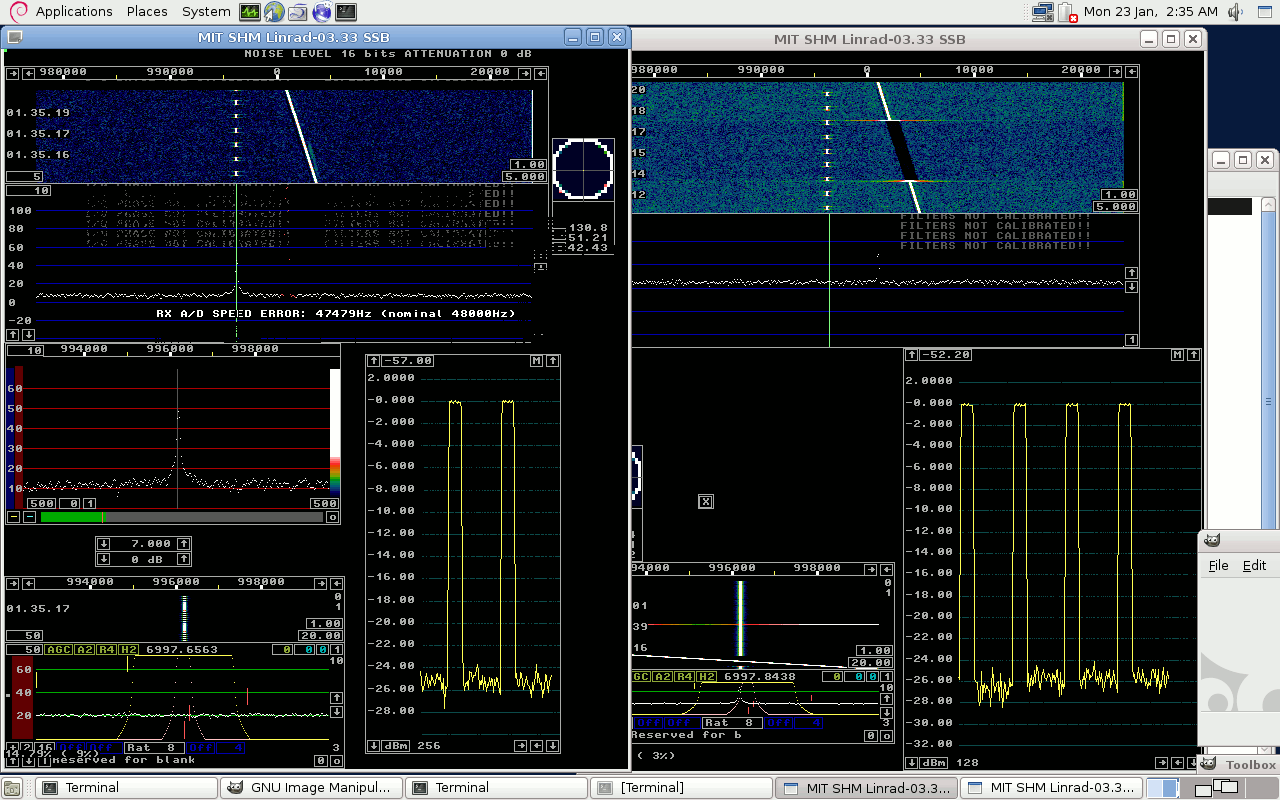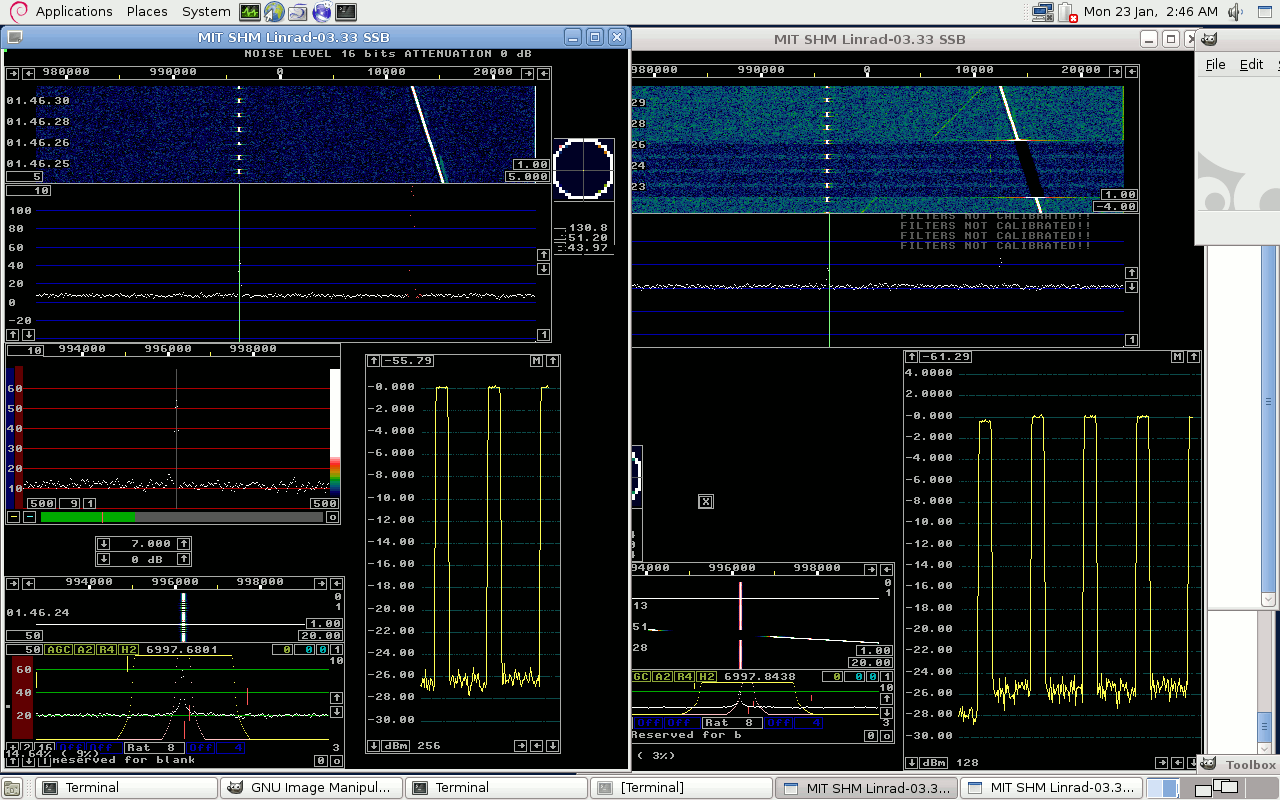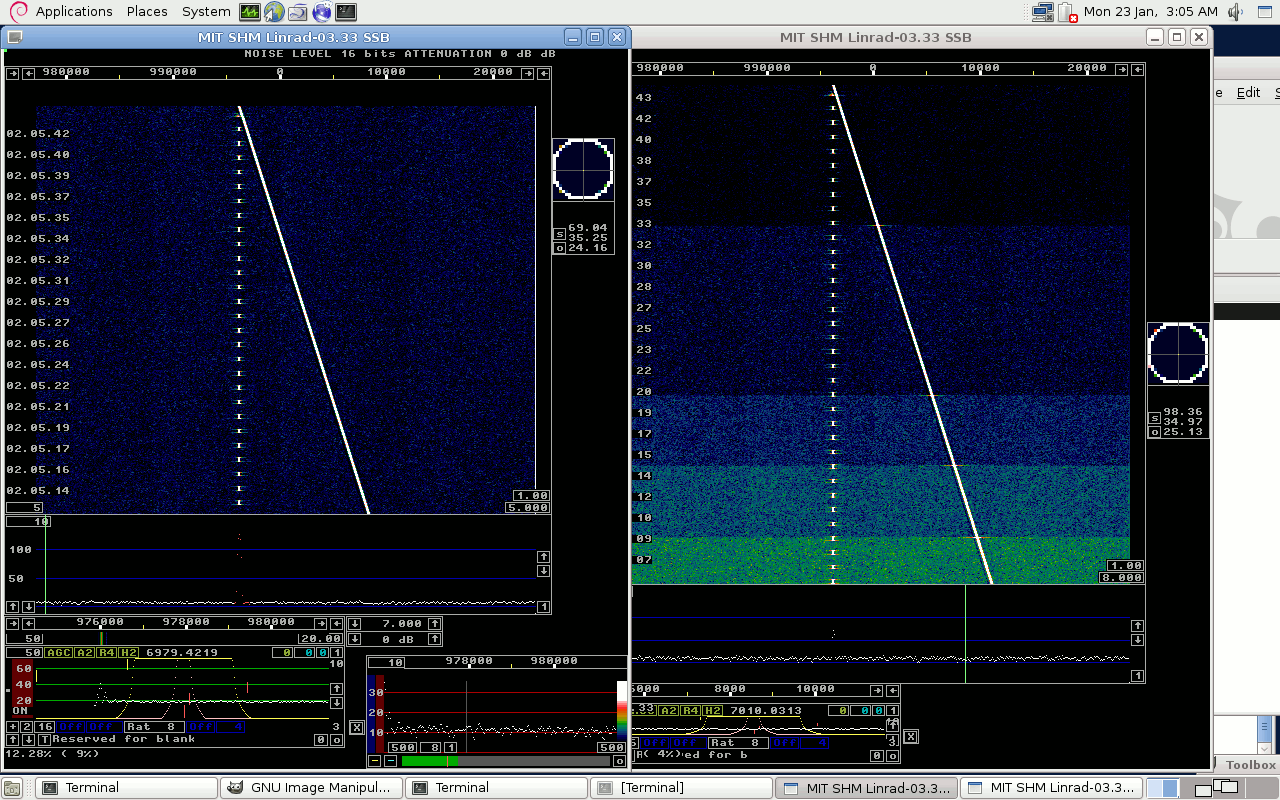
Sending 16 bit data from Linrad to MAP65.Before considering the settings inside Linrad a MAP65 user should first make sure that the antenna mounted preamplifier overcomes the noise floor at the input of the next RF amplifier by at least 13 db. Preferrably 16 dB. More than 18 dB noise increase when switching on the antenna mounted preamplifier should be avoided since excessive gain would not improve the system noise temperature while it would degrade the dynamic range.Once the analog signal path is properly configured one should set the level into the A/D converter properly. When the analog input to the A/D converter unit is connected the noise floor should normally increase by only a few dB when the power to the preamplifier is off. Note that SDR-IQ and SDR-14 should be adjusted in two steps since first the noise floor into the A/D should be set properly while the gain into the USB link is set to maximum (RCF shift=0.) As a second step the RCF shift should be set to produce an appropriate signal level into Linrad. Once Linrad has a properly configured analog and digital path into the PC one should set the gain properly at the input of the first FFT by use of the parameter First FFT amplitude. See this link for examples of correct and incorrect level settings. The first FFT level. The timf2 time function.The second time function, timf2, consists of two I/Q data streams for each RF channel. The full passband is split into two parts as indicated by white or red points in the main spectrum. The noise blanker operates on the weak signal part only and the split into two parts is done to allow noise blanker operation even when strong signals are present in the passband.Linrad normally takes the sum of weak and strong signals and sends the result into the second FFT. That same signal is also sent to the network in case TIMF2 output is enabled. Figure 1 shows the screens of a master and slave configuration where Linrad sends data via the network into another instance of Linrad running as a slave receiving the timf2 data. |
 |
|
Fig 1. The internal test signal of Linrad sent to a second
instance of Linrad with the TIMF2 format.
Note that the noise floor in timf2, the green bar, is very close to the red line in the bottom of the high resolution graph. With the output from the first backwards FFT as low as this there is a small contribution from quantization noise. That is clearly visible in the time interval 01.35.14 to 01.35.17 when the strong signals are blocked. The wideband noise floor in the strong signals time function is not quite negligible as it should be. That means that the quantization noise in the weak signal part is also not quite negligible so it causes a small S/N loss. |
 |
|
Fig 2. The internal test signal of Linrad sent to a second
instance of Linrad with the TIMF2 format.
Figure 2 differs from figure 1 only in that the gain of the first backwards FFT is 6 dB higher. The first backwards FFT att. N is 6 in figure 1 and 5 in figure 2. Note that the wideband noise from the strong signals time function is negligible. The wideband noise floor is not affected when the strong signal component is blocked. |
 |
|
Fig 3. The internal test signal of Linrad sent to a second
instance of Linrad with the TIMF2 format with an attenuation of 9 dB.
This is indicated by the box showing 9 at the base of the high
resolution spectrum of the sending instance of Linrad.
Figure 3 differs from figure 1 only in that the the attenuator between linrads timf2 signal and the network is set to 9 dB. The green bar in the high resolution spectrum behaves exactly as in figure 1 (of course,) but figure 3 was captured when the weak signal was on. It is VERY obvious from the waterfall in figure 3 that the noise is severely distorted. The S-meter shows a S/N degradation of 1 dB but a really weak signal would suffer from a much larger degradation. Note how the noise floor seems much lower when no signal is present. Use the timf2 attenuator carefully. MAP65, at least early versions do not perform well with too high signal levels. Setting too low signal levels would add quantization noise regardless if it is done with the backwards att. N or with the timf2 attenuator. The effect of the timf2 attenuator is clearly visible in figure 4. This is a way to set the level into MAP65 without changing anything of Linrads internal processing. |
 |
Fig 4. The internal test signal of Linrad sent to a second
instance of Linrad in the TIMF2 format with the attenuation
set to 0, 2, 4, 6 and 8 dB respectively.
Real world signals.With signals from a real antenna the noise floor is likely to contain weak spurs and other interferences that can make the green bar in Linrad indicate a noise floor somewhat above the real noise floor.It will be a good idea to analyze the timf2 signal with a second instance of Linrad to make sure that the noise floor from the strong signal part is insignificant. Apply the timf2 attenuator and look for the noise floor at frequencies that have white pixels in the master. Those frequencies should have a noise floor that is independent of whether strong signals are blocked or not. To SM 5 BSZ Main Page |